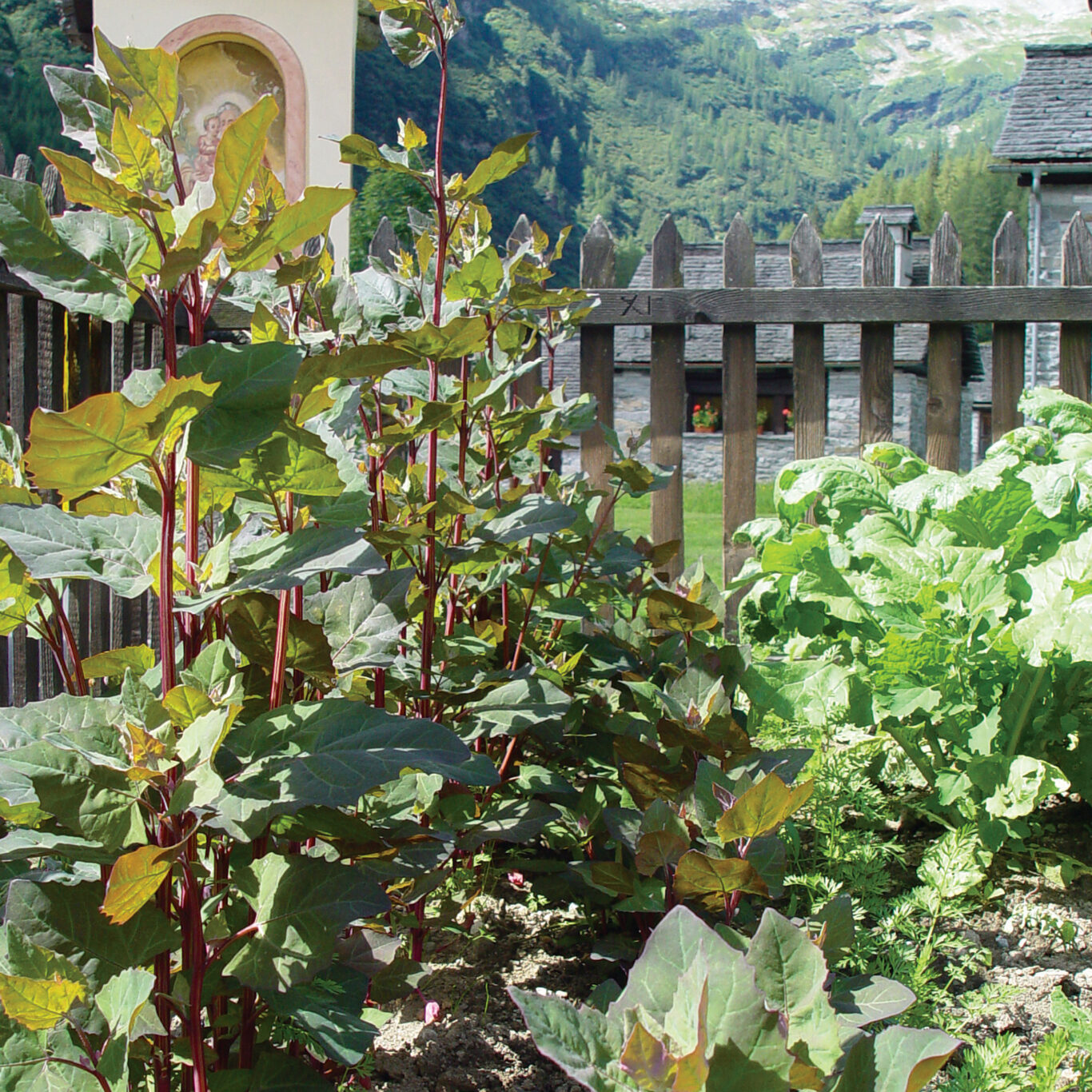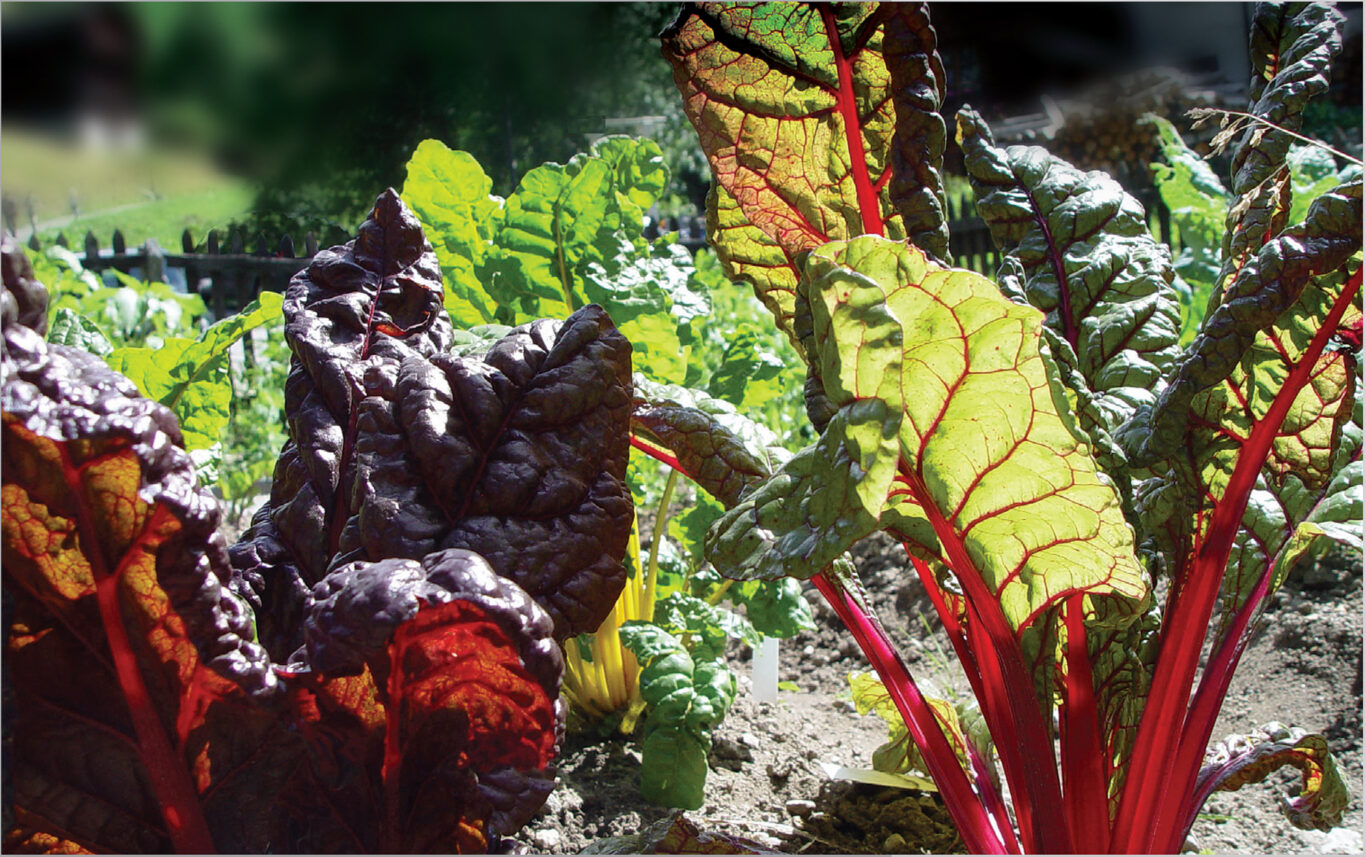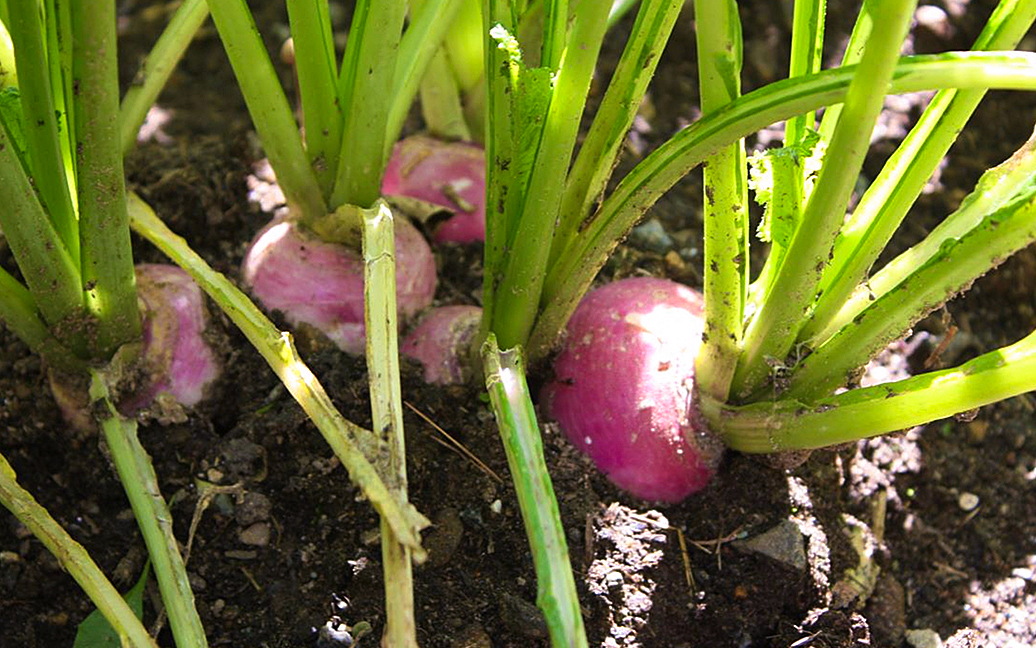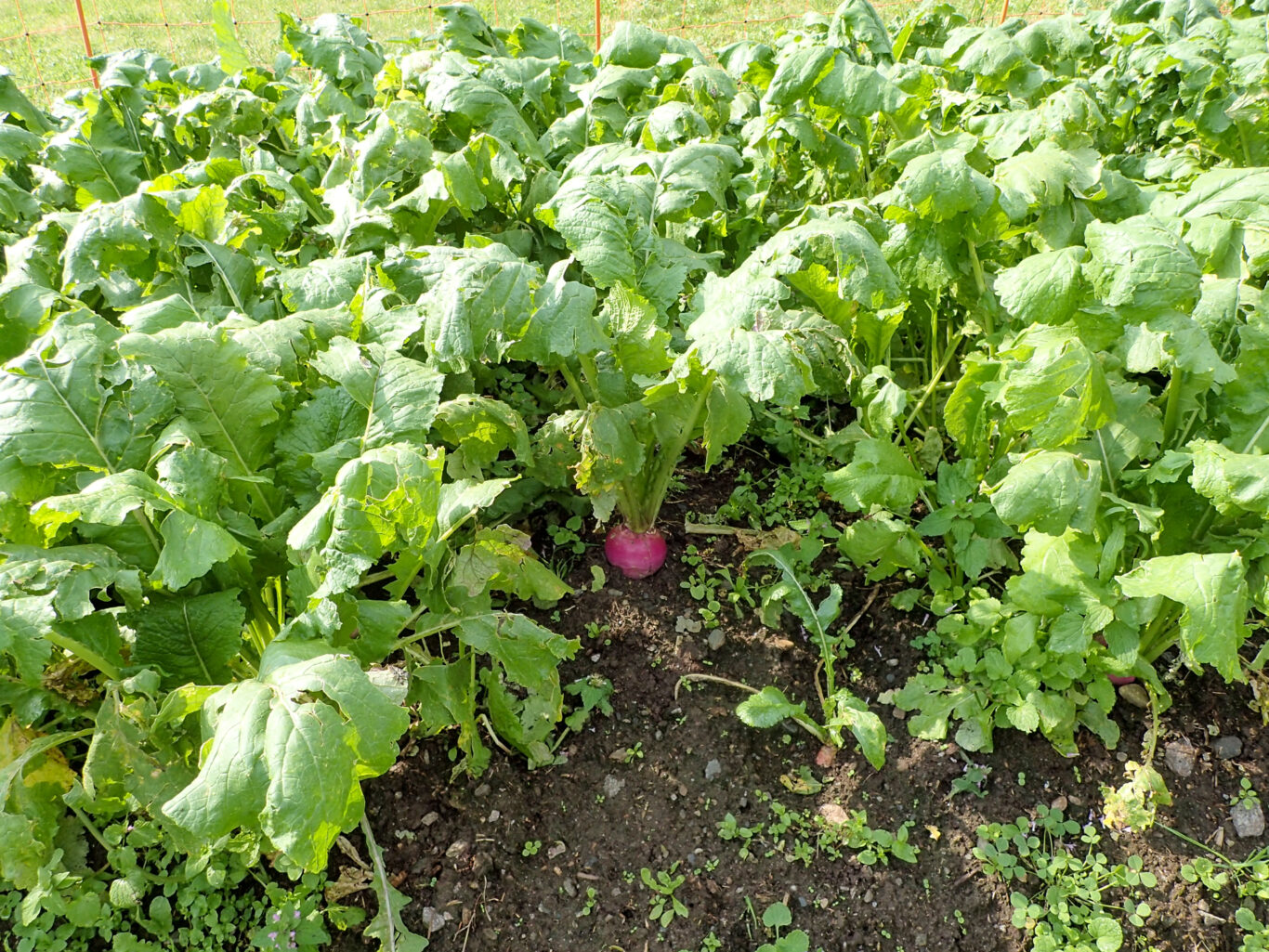
Garden ProSpecieRara

In the museum‘s variety garden rare vegetable and herb varieties are planted in cooperation with the ProSpecieRara Foundation. The vegetables are then used to prepare the traditional Måtzufåmm soup which is served on the occasion of the autumn festival of the same name.
In a separate tour, you can discover interesting and curious facts about the plant varieties that grow in the ProSpecieRara vegetable garden of the Walserhaus Museum on about 72 m2 . The garden illustrates the narrow basis on which the mountain population had to secure their food and presents which cultivated plants still thrive in the harsh climate at 1500 m above sea level. In the tour brochure you will find expressions, anecdotes and farming rules about the vegetable garden. Here is an example:

Bosco Gurin turnip (Brassica rapa subsp. rapa)
belongs to the cruciferous family
The white-purple or white turnip was already known as a cultivated plant in ancient times. Before the potato was introduced, the turnip was very important in Europe because it is rich in various vitamins, minerals and protein. In addition, relatively high amounts of mustard oils are present in the peel.
The Bosco Gurin turnip is called Ggurijnar Rååfu and has been preserved in Bosco Gurin for generations. It has adapted very well to the harsh mountain climate.
Interestingly, the Gurin turnip does not thrive equally well in all the fields of the village, so it seems to prefer very specific conditions.

Some expressions in Ggurijnartitsch
referring to the turnip
Rååfu: turnip
Raaftschi: little turnip
Rååfusålp: homemade healing ointment from turnips
a Rååfu schåba odar schwåårbu: to scrape a turnip (cut it in the middle, scrape the cut surface with a knife and eat the scrape continuously)
deri Raaftschi: dried slices of turnips, which were used in winter as an addition to the soup.
Rååfsååmru: plant grown for seed from a turnip hibernated in the cellar or in a bed of wood wool and planted again in spring; the pods are taken off before breaking open and stored until the following year.
Use in the kitchen
If you want to eat the turnip raw, you have to remove the skin. The leaves of the turnip are used like spinach and in some areas the leaf stalks are also eaten. The root itself can be cooked like any other turnip.


